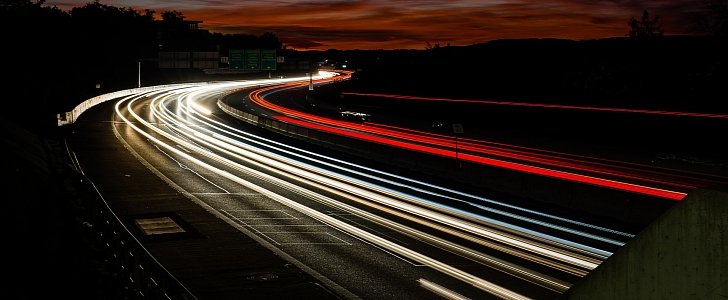If you’re up to date with German politics, then you might remember the stance of the Green Party headed by Cem Özdemir regarding the Autobahn. To make a long story short, these guys intended to pass a law that would restrict motorists on the Autobahn from shooting past the advisory speed limit of 130 km/h.
The federal parliament – a.k.a. Bundestag – voted against the proposal by the dozens, namely 498 rejections out of a total of 631 votes. The far-rights from AfD and business-friendly FDP both rejected the bill according to Deutsche Welle, and even though a few center-left social dems and conservatives backed up the proposal, it was all for nothing because the Autobahn is the Autobahn.
Backers made a case for improving traffic, pollution, and the safety of motorists, but when you look at the bigger picture, it’s easy to downplay every single argument. Even the Environment Ministry said that 130 km/h (80 mph) on every stretch of highway in Germany would to little to reduce the carbon footprint. Of course, densely-populated areas have speed limits, and the same applies to construction zones and whenever there’s bad weather such as rain, snow, and fog.
Neighboring countries conform to the 120 or 130 km/h speed limit on highways, leaving Germany the only European country without such a restriction. Deutschland also has one of the least-concerning statistics in regard to road fatalities at 4.1 deaths per 100,000 inhabitants in 2016, matching Ireland and Japan.
That’s less than half the road fatalities in Romania and quite a lot less than the 12.5 deaths per 100,000 inhabitants in the Republic of Moldova. Neighboring France couldn’t do better than 5.5 in 2016 while the United States reported 12.4. So to speak, a simple metric such as speed doesn’t have all that much to do with road fatalities.
According to DE Statis, on the other hand, 2018 marked an increase of 2.7 percentage points compared to the previous year in terms of deaths with an additional 85 over 2017. It’s also worth highlighting that 2018 had the third-lowest figure for road fatalities since 1950 as per the Federal Statistics Office, and the increase was due to a greater number of bicycle and motorcycle deaths.
The FSO also reports that deaths on the Autobahn have decreased in 2018, which goes to show that discipline behind the wheel matters most. As for the reason many Germans stick to or close to the recommended speed limit of 130 km/h the highway, surpassing the Richtgeschwindigkeit increases the driver’s liability in the case of a collision.
Backers made a case for improving traffic, pollution, and the safety of motorists, but when you look at the bigger picture, it’s easy to downplay every single argument. Even the Environment Ministry said that 130 km/h (80 mph) on every stretch of highway in Germany would to little to reduce the carbon footprint. Of course, densely-populated areas have speed limits, and the same applies to construction zones and whenever there’s bad weather such as rain, snow, and fog.
Neighboring countries conform to the 120 or 130 km/h speed limit on highways, leaving Germany the only European country without such a restriction. Deutschland also has one of the least-concerning statistics in regard to road fatalities at 4.1 deaths per 100,000 inhabitants in 2016, matching Ireland and Japan.
That’s less than half the road fatalities in Romania and quite a lot less than the 12.5 deaths per 100,000 inhabitants in the Republic of Moldova. Neighboring France couldn’t do better than 5.5 in 2016 while the United States reported 12.4. So to speak, a simple metric such as speed doesn’t have all that much to do with road fatalities.
According to DE Statis, on the other hand, 2018 marked an increase of 2.7 percentage points compared to the previous year in terms of deaths with an additional 85 over 2017. It’s also worth highlighting that 2018 had the third-lowest figure for road fatalities since 1950 as per the Federal Statistics Office, and the increase was due to a greater number of bicycle and motorcycle deaths.
The FSO also reports that deaths on the Autobahn have decreased in 2018, which goes to show that discipline behind the wheel matters most. As for the reason many Germans stick to or close to the recommended speed limit of 130 km/h the highway, surpassing the Richtgeschwindigkeit increases the driver’s liability in the case of a collision.






































